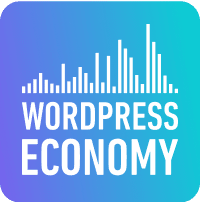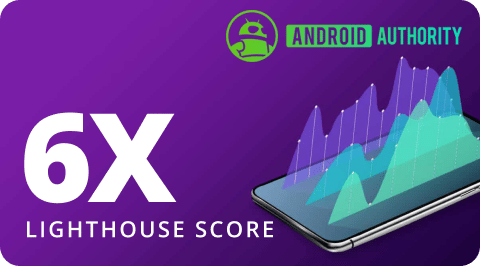Keynote Summit/2021: Fit for the Future
Rapid changes in the web ecosystem, a proliferation of mobile and web-enabled devices, and rising user expectations have increased the multifaceted challenges brands and agencies must navigate to stay a step ahead of the competition.
In this session, WP Engine Founder & CTO Jason Cohen explains how our platform, including our latest solution for Headless WordPress, Atlas, paves the way for digital innovation.
In this session, WP Engine Founder & CTO Jason Cohen discusses:
- The multifaceted challenges facing businesses, their marketers, developers, and their wider organization as disruption and digital innovation shape the future of the web.
- Building powerful websites for on-brand, omnichannel experiences that are hyper-focused on performance and the end-user’s experience.
- WP Engine’s latest product innovations which are all built to help your business evolve and make sure you’re fit for the future.
The big thing to understand about being fit for the future is that you can’t rely on just one silver bullet. The answer isn’t going to be just one piece of technology. You can’t think about just the web developer, or just the content marketer, or just the web designer. Everyone on the team needs to be empowered.
WP Engine Founder & CTO Jason Cohen
Full text transcript
JASON COHEN: Hi, I’m Jason Cohen, founder and CTO of WP Engine. I started WP Engine 11 years ago with a mission to make WordPress websites fast, scalable, and secure, while providing the best customer service in the industry, which is not that hard in our industry. 11 years later, we power millions of websites for nearly 200,000 customers.
We succeeded well beyond even my expectations. And a lot of you listening to this are part of that journey. So on behalf of the global team of the 1,000 people here at WP Engine, we thank you truly.
And together we’ve succeeded more than you might think. We are now the seventh-largest public website platform in the world. Of the top 10 million websites, we host more than DigitalOcean, more than Wix, more than Squarespace. And our direct competitors, the other managed WordPress platforms, they don’t even crack the top 20.
And the way we earn this leadership position is by making good on those promises of incredible customer service and through relentless product innovation. We have become excellent at predicting the needs of our customers and then building products that everybody loves, whether you’re a developer, a marketer, or a designer. Now, with this leadership position in websites generally and in WordPress specifically, of course, people look to us to find out what’s next.
You can imagine I get asked all the time, what’s the future of the web? What things are just fads? What’s going to stick? What do I need to learn? What new technology should I be adopting?
And behind those questions are more fundamental questions, perhaps even more scary questions, like, is my team ready for these changes? Is my brand ready? Is my agency ready? As we would say, are we fit for the future? So in the next 20 minutes, I’m going to show you how the latest product innovations from WP Engine help you answer those questions and make you fit for the future.
And the big thing to understand about being fit for the future is that you can’t rely on just one silver bullet. The answer isn’t going to be just one piece of technology. You can’t think about just the web developer, or just the content marketer, or just the web designer. Everyone on the team needs to be empowered.
The reality is, the web is multifaceted. There are many challenges and opportunities for marketers and developers. And those evolve over time.
And you know that. As an agency, you know that. Each of your clients is different.
One client is dead set on WordPress. The next one wants a headless solution. The next one wants you to tell them what to do. And the same could be said of 20 different technology choices.
Even zooming in to a single brand, your needs are multifaceted too. Take this example first: your brand, let’s say, starts out needing a corporate website to talk about the product. Of course, that’s standard.
And then later, as you grow, you decide to launch a conference of your own, kind of like the Summit conference right here. So now you need a stand-alone microsite. And then, uh-oh, 2020 comes around, the pandemic hits.
You’ve been selling your product in stores, so your business model is disrupted. So now you have to transform your business and sell products directly to customers online. So you build an online store. So over the past 11 years, WP Engine has made our customers fit for the future through product innovation for just these sorts of things.
So take the corporate website. A corporate website needs to be beautiful and on-brand. It needs optimal SEO, it needs to run A/B tests, all this sort of thing. The content team needs the ability to rapidly publish all kinds of content, like home page text, pricing updates, breaking news, social media pieces, that sort of thing, right?
WP Engine’s Genesis suite of themes and blocks is the perfect solution for this. Beautiful themes to get started quickly and 100 different layouts to support all the usual things you need to do on corporate websites quickly. That’s why more than a million people have built their websites with Genesis.
Not only that, Genesis has always been in lockstep with WordPress core in the evolution towards Gutenberg and full site editing. So our Genesis customers have always been compatible with all the changes to Core long before those changes were adopted by the general public. That’s what “fit for the future” looks like. That’s what WP Engine’s been delivering.
Or take the second example. A brand is so successful, it launches its own conference. But the corporate site wasn’t designed to also be a conference site, of course. So now you need a microsite on a short timeline. And that requires developers, designers, and marketers all working closely together.
WP Engine’s Local product is perfect for this. With Local, the developer can work rapidly on their own computer to bring a site to life. Local websites run many times faster than Docker-based solutions, so that’s a godsend for developers.
And Local has some awesome features, like live links. So with live links, you can send a URL to collaborators, and they get direct private access to the project running on the developer’s computer. You don’t have to deploy it somewhere first. They can just see it instantly.
So Local isn’t just the fastest way to develop. It’s also the fastest way to collaborate. So with speed plus features, this is why 100,000 developers rely on Local, which is more than any other WordPress development tool. So your brand can launch that conference microsite quickly, and the whole team is happy.
Now, remember this part. COVID hits, now you need an online store. Well, the team can use Genesis and Local to build and launch the site. Plus, of course, they can get the fast, scalable, and secure hosting platform that WP Engine is known for. But there’s more.
Because with WP Engine, they also get Instant Store Search for WooCommerce. And this gives their shoppers an incredibly fast product search experience, including auto-suggest as you type. Now get this, stores that enable WP Engine’s instant search see an 18% lift in conversion rate.
So in this case, WP Engine innovation isn’t just fit for the future. It directly makes you more money. I like that. So for everything this brand did, WP Engine had the best tools for what they needed, including even making them more money. And this is what it means to be fit for the future.
Often, when you hear “change,” you think “scary,” “disruptive,” or “Now we just have to do work just to get back to where we were.” But with the relentless product innovation from WP Engine, your company can embrace the complexity of change and even use it to grow and to thrive.
Now, speaking of change, have you heard about Core Web Vitals? This is the latest thing everyone’s talking about. If you haven’t heard about it, here’s what it is.
Core Web Vitals is a new standard created by Google. And it measures the user experience on web pages. So it measures things like how fast your page loads, and how annoying it is for the user, like if the page jumps around while it’s still loading, or clicking a button takes a long time to respond.
Now, earlier this year, Google announced that search rankings will now factor in these Core Web Vitals. So all things being equal, a faster site with a pleasing experience will rank higher than other sites. So because these Core Web Vitals affect search rankings, this is a serious business issue for anyone who relies on organic web traffic, which is most of us.
So marketing professionals are worried about the impact of this change on their business. And they’re right to be worried. They’re wondering if their website is fit for Core Web Vitals. Is it fit for this future, right?
So now here’s the good news. Google and other major internet companies are making free tools to help your site become faster. So they’re not just rewarding sites that have better performance. They’re creating tools to help improve performance.
And here’s an example. It’s really interesting. It’s called predictive prefetching.
This is a new technology that guesses which link the user will click next. So the guess comes from Google Analytics data and machine learning. And then having guessed which link is likely to be clicked, the browser preloads that page in the background. So then when the user does click that link, boom, the next page appears instantly.
So this creates an incredibly fast browsing experience. It also means higher search rankings and more conversions. So there’s an assortment of tech that makes this possible, as you see here. And it’s all open source and free, even better.
Now, WP Engine wants to make this experience available to our customers. But predictive prefetching is not yet implemented in WordPress. Rather it’s been implemented in the tech that you see here at the end. That’s Next.js and Gatsby. They are two examples of JavaScript frameworks that developers use to build websites apart from WordPress.
So we have a situation where new technology is available to make websites fast. But it’s flowing to these JavaScript frameworks before WordPress. And this isn’t the only example of this new pattern. Here’s another one, another cool thing.
Netflix created a new image file format called AVIF. So AVIF is the same quality as a JPEG but just half the size. So that means your media-rich web pages load twice as fast if you use AVIF.
And again, you can take advantage of this new technology and these free tools. Thank you, open source. Thank you, big internet companies, for once.
And WP Engine wants to make these capabilities available to our customers too. But WordPress doesn’t yet support the AVIF file format. It’s possible to hack it in, but it’s difficult.
So as you can see once again, these new innovations are flowing to JavaScript frameworks first. So what are marketers and developers doing about this? They need strong Core Web Vitals. They need high search rankings and high conversion rates. So maybe they need this JavaScript stuff, right?
But marketers love WordPress. Marketers know how to use WordPress. Maybe WordPress has been customized for them. So what do you do?
So here’s what Brian Dean did. Brian is the author of Backlinko, one of the most respected SEO thought leaders. Now, he’s a famous SEO person, so his site has to rank high for SEO keywords, right? His site needs to be an example of what the very best looks like in SEO.
So Brian was concerned about Core Web Vitals, just like everybody. So Brian adopted one of those new JavaScript frameworks and paired it up with his WordPress site. So you see, Brian still uses WordPress to write and manage his content.
But he doesn’t give WordPress the responsibility of creating web pages and serving those to visitors. Instead, he uses a different JavaScript infrastructure and a JavaScript framework called Next.js. So now, in addition to having strong Core Web Vitals, his site can now use things like that predictive prefetching and AVIF images.
So this technique has a name. When you use WordPress for content editing and use a JavaScript system to create the web pages, this is called headless WordPress. Backlinko is using headless WordPress to be fit for the future.
So now, this headless WordPress thing is becoming very popular. And you can see why. Marketers love the high performance.
But it turns out developers love it too. Developers love headless because they can create websites using JavaScript or TypeScript instead of PHP. And developers as a whole dramatically prefer JavaScript to PHP.
Now, at WP Engine, we’ve anticipated these trends. We see that many marketers are shifting to headless and that developers are pulling their marketing departments and pulling their agencies into this headless world. So seeing this trend and keeping you fit for the future, earlier this year, WP Engine launched the first complete headless WordPress solution. It’s called Atlas.
And Atlas innovates in the space of headless WordPress in a few ways. First of all, Atlas makes WordPress ready for headless. What does that mean?
Well, WordPress is 18 years old. It was made before there was social media, before there was a mobile phone, before there was cloud computing. Certainly, before people used headless.
So being 18 years old is part of why it has so many great features, such a great community. But it also means it was not originally designed to work with headless, of course. So there are some things that needed to be tweaked.
Hyperlinks and media URLs have to be changed. Settings need to be changed or even hidden, things like that. And the most difficult part is the Draft Preview button needs to be completely rewired. So Atlas does all this for you.
The next piece is called Node Engine. So Atlas builds and deploys your JavaScript code into our own auto-scaling, auto-healing system. With other headless WordPress architectures, developers have to use one vendor for WordPress, a different vendor for Node, sometimes more vendors for CDNs, build servers, stuff like that. But with Atlas, you get all of that in one place. So you don’t waste time choosing different vendors, and then integrating different vendors, and then paying for different vendors, and also troubleshooting problems that span multiple vendors.
So the question is, OK, this sounds good. But does it work? Do our customers get all these advantages of performance, and scale, and Core Web Vitals? Well, of course, you knew I was going to say yes.
So a case in point here is Android Authority. This is a website that gets 30 million monthly visitors. It’s a hugely popular media site dedicated to news and reviews about mobile devices and the mobile space in general. They have 60,000 posts, and they receive hundreds of hits per second.
And they switched from standard WordPress to headless WordPress running on Atlas. So what happened with their Core Web Vitals? Once they launched an Atlas, all of their Core Web Vitals scores increased. Their performance score in particular jumped 6X.
And you can see this for yourself. Just go to their website. It’s AndroidAuthority.com. Go to AndroidAuthority.com, you’ll see their pages load instantly. It’s so fast, you don’t even really need analytics tools to tell you that it’s incredibly fast.
And best yet, Android Authority’s site performance is now better than their direct competition. So imagine what that does to their search rankings when their optimized site goes head-to-head with other sites with the same breaking news story, right? They’re going to get the traffic. So this is what it looks like, again, to be fit for the future. And if this, in particular, is interesting to you, come to the breakout session later today, where Android Authority will talk in detail about their whole headless journey.
Now, everything I talked about, this is all stuff we’ve already launched. But now I’m really proud to announce the launch of a new product called Atlas Content Modeler. Here’s how this came about.
In our work with customers who are building headless websites, we found that developers needed a modern and flexible way to build something that we call content models. So what is a content model? So OK, a website might have an object called an Event.
Events have a title. They happen at a time and a location. They have an icon, stuff like that. Now, marketers need to be able to manage these Events—create them, edit them, delete them, and so on. And developers need to be able to access these Events via API.
So, for example, maybe on the home page, there’s a list of the next three events. And maybe there’s a whole Events page that lists all events, maybe even in a calendar format. So together, developers and marketers need to agree on the model, meaning all of these fields that go into an Event. And this entire process is what we mean by content modeling—creating and managing the models and then creating and managing the content, which are instances of those models.
In WordPress, this has traditionally been done with an amalgamation of things, like custom post types—as if this thing is a post—custom post types and custom fields with multiple plugins, extra work to make things work properly with APIs, maybe extra things to be able to set the order of this stuff, and other basic features like that. And even so, it’s a confusing user interface, where everything still looks and acts like a post rather than whatever it’s supposed to be, down to strange things like requiring a Title field always or sorting by creation date instead of by whatever the user actually wants them to be sorted by. In other words, these content models have never been a first-class citizen in WordPress.
So with Atlas Content Modeler, we’ve changed all that. Content Modeler is a simplified, headless-first, beautifully designed approach to data modeling inside WordPress. It’s lightning-fast. You will be shocked by how fast it is and delighted. And it’s even fully accessible, usable by mouse or keyboard.
Under the hood, it’s completely compatible with how WordPress normally handles this, which means it’s compatible with other plugins or compatible with your own custom code. So if this all sounds interesting to you, come to our workshop later at the conference. We’ll do a full demo. And you can try this for yourself.
But wait, because if that’s not enough, there’s even more. I’m also proud to announce another new product that’s now in alpha. It’s called Content Engine.
Content Engine dramatically accelerates the speed and scalability of the APIs that pull content from WordPress. So pull the post content, pull those models. When I say “dramatically” accelerates content, it’s like head-spinning how much faster it is. We are currently 10 times—we can process 10 times more requests per second than a beefy WordPress server. And this is still in alpha. It will be even faster over time.
So obviously, if your headless WordPress site can pull content 10 times faster, obviously it makes the website faster. And that’s already enough reason to care about it. But it goes further than that.
Because when APIs answer in a matter of milliseconds, even under high scale, it means you can build completely different kinds of sites. So, for example, today, developers spend an inordinate amount of time thinking about caching—caching database queries, caching API requests, caching React properties, caching entire pages. And they have to do all that to make the site fast and scalable.
The Content Engine is so fast that you can just throw a lot of that into the trash. You don’t need to cache APIs when they only take milliseconds. You don’t need to cache WordPress database queries if your headless site isn’t even talking to WordPress.
So you can have a dynamic site like Android Authority, with zillions of URLs, and you don’t have to pre-render everything, you might with Gatsby. Because it’s so fast and scalable to just generate pages in real-time when they’re requested. So all this effort developers go into you can just throw away. That is a completely different way of thinking about building a site.
It also opens the door to things like personalization and analytics, integrating all sorts of third-party tools. Because your site’s dynamic now, not some statically generated brochure, like the sites we used to make in the 1990s. Content Engine changes the game for headless websites by drastically accelerating the Content API layer. So if this is interesting to you, if you want to see Content Engine in action, if you want to join the alpha, we have a demo of this also later in the conference. So please join us for that.
So this is how WP Engine has been helping our customers be fit for the future for the past 11 years. And as you can see, our pace of innovation is accelerating as our company continues to grow and lead in all global websites. So what’s next?
Well, the future will continue to be multifaceted. So, for example, right now, maybe your only concern about mobile devices is that your site loads fast even on poor internet connections and that your content looks good on a small screen. But the capabilities of Android devices are diverging from iOS devices. And Chrome and Edge browsers are charting a separate path than Safari and Firefox.
And new customer expectations are emerging, like the expectation of a dark mode theme. Your site will need to adapt to the preferences and capabilities of a specific user on a specific device in a specific region of the world, and even according to their local laws for privacy and other things. And managing all those dimensions by hand, and adding A/B testing into the mix and other things, it might be impossible to build that by hand.
So we might also need something like machine learning to predict the best experience for each user and a high-performance platform to deliver that dynamic experience quickly. You can even imagine Google personalizing search results according to more and more dimensions like this as well. The possibilities and the challenges also are endless.
But don’t worry, WP Engine has seen the story before. Whatever you need today and whatever you grow into in the future, WP Engine will ensure that you are ahead of the curve. WP Engine will ensure that you are fit for the future. Thank you.











